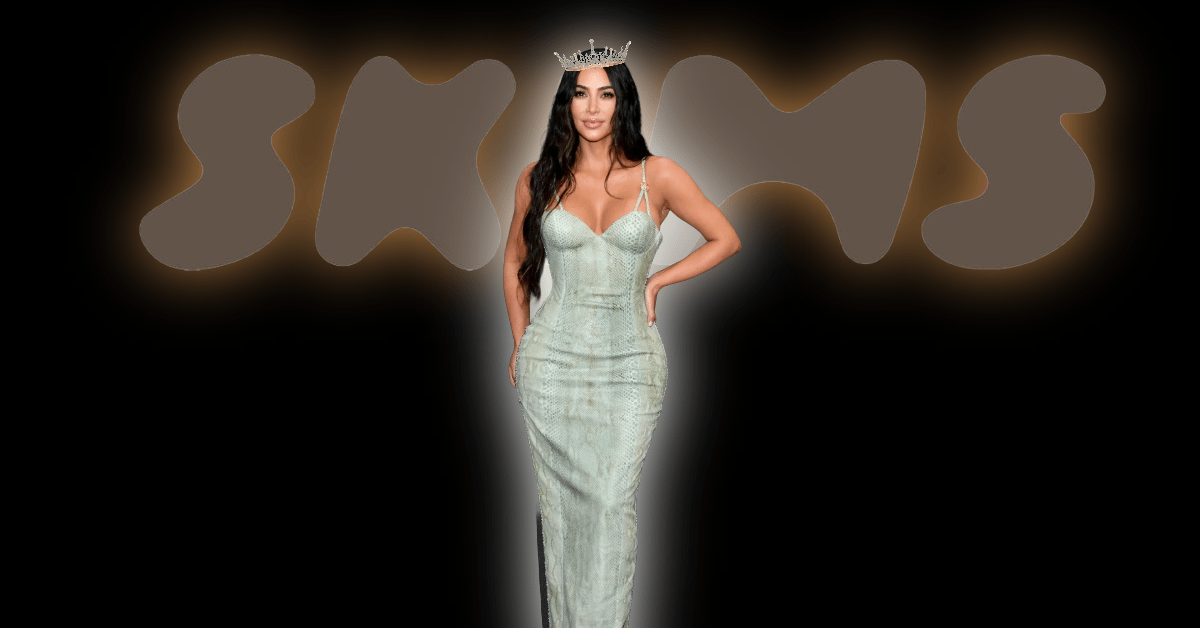
If you’ve ever doubted Kim Kardashian’s business acumen, congratulations, you can now join the long line of generic haters.
But I ask you first to consider this: a woman once ridiculed for being “famous for nothing” now runs a billion-dollar brand worn by athletes, supermodels, and the US Olympic team. The shapewear line SKIMS launched in 2019. And, within five years, it became a case study in how to turn relentless public scrutiny into market dominance.
SKIMS turned sex appeal into strategy, and built a billion-dollar brand around confidence, control, and cultural precision.
Kim Kardashian has been hugely underestimated for majority of her career.
You’d think being punchline of almost every “plastic” and “bimbo” joke and the object of unrelenting criticism (valid or not) was bad enough. That is, until you remember the fact that some of her most private moments were non-consensually distributed to the entire fkn world.
But Kim is not a victim. She’s the OG attention incubator, understanding what that meant before the attention economy was even an idea.
Every headline, meme, and viral clip became market research. What people mocked, she monetised. What they obsessed over, she scaled. By the time SKIMS arrived in 2019, Kim was far more than a celebrity launching a side hustle. She was a media-literate operator ready to turn perception into product.
Seeing opportunity in the opposite and owning the narrative.
The shapewear industry used to be where confidence went to die. Women, if you know, you know. It was beige, restrictive, and built on shame and “fixing flaws” rather than celebrating form. Kim saw the gap.
If her public persona had taught her anything, it was that being looked at isn’t the same as being seen. She built SKIMS on that distinction. The brand didn’t tell women to hide; it promised to reveal differently.
The genius was functional inclusivity (yes, ten shades of “nude” was overdue). But it was also emotional inclusivity. It was the idea that feeling sexy doesn’t have to mean performing for someone else’s gaze, but relishing in your own.
Kardashian understood the business of selling sexy better than anyone because she lived through the cultural whiplash of it. So she turned the male-gaze fantasy into a female-owned framework. That’s why SKIMS sells agency disguised as underwear.
The strategy: turning perception into precision.
This is where SKIMS is the epitome of brand building.
Product: Every piece is engineered to sculpt, not suffocate. The materials move with you. The sizing feels generous without losing shape. It’s bodywear that does what the marketing promises. And that kind of honesty is so rare, it’s almost radical in fashion.
Positioning: “Accessible aspiration.” That sweet spot between luxury and relatability. You can afford it, but it still feels like an upgrade. It’s expensive enough to feel special, practical enough to justify when your bf asks where the grocery money went.
Aesthetic: Minimal, tonal, tactile. The visual language of confidence. Instead of chasing trends; Kim built a visual system, one that mirrors her own transformation from maximalist chaos to modern restraint.
Marketing: Kim turned the chaos of attention into an art form. Every drop, every casting choice, every paparazzi shot feels like it’s been pre-approved by the algorithm itself. When she dropped a menswear line starring NBA players, it was a collision of worlds designed to explode online.
The cleverest subtlety of SKIMS is that it never screams “sexy.” It’s never doing too much. It hums with it. Controlled, confident, camera-ready.
The execution: visibility as infrastructure.
Kim's fame is obviously the brand’s backbone. Her personal image and SKIMS’ identity are symbiotic. The way she dresses, the way she’s photographed, even the way she curates her house, all of it reinforces the same visual and emotional cues: softness, precision, control.
When SKIMS was announced as the official loungewear provider for Team USA, the internet laughed, as they so often do. Then realised how brilliant it was. She’d merged patriotism, athleticism, and sex appeal in one move. It was calculated expansion into cultural legitimacy.
Every public moment is brand work. Kim has effectively turned her life into a case study in marketing integration. SKIMS doesn’t need ads when Kim Kardashian is the media buy.
The outcome: redefining credibility and femininity in business.
Within five years, SKIMS was valued at over $4 billion. But this story isn’t about finances. To me, it’s philosophical.
Kim built a brand that made “sexy” intelligent again. She reframed sensuality as a design principle, not a personality trait. No longer about being ogled, SKIMS represents a version of sex appeal that’s self-authored.
And she did it without diluting her femininity to earn business credibility. No corporate rebrand into neutrality. No “girlboss” rebrand into false empowerment. Just a woman building an empire that looks like her, moves like her, and thrives because of it.
For years, critics used femininity as shorthand for frivolity. Kim turned that into her USP. She’s proof that glamour can be strategic, softness can be strong and being “seen.” When you control the lens, can be the sharpest business move of all.
The takeaway: the Kim K playbook for brand-building.
Kim Kardashian is an architect. And SKIMS is the blueprint.
What marketers can learn from her:
Visibility is leverage. Don’t fear the spotlight. Learn to light it yourself.
Sexy doesn’t mean stupid. If you understand your audience’s desire, you control the market.
Own the narrative before someone else rents it.
Authenticity scales when it’s consistent. SKIMS never breaks character and neither does Kim.
Cultural fluency beats corporate polish. People don’t buy products; they buy the mood. The vibe. The feeling.
Kim Kardashian built her empire almost out of thin air, or more accurately, out of thin fabric. What started as shapewear became a cultural operating system: one that redefined beauty, visibility, and power for the algorithm age.
And before you come for me, remember that hating her doesn’t make you interesting, babe. It just makes you a hater.
-Sophie Randell, Writer
Not going viral yet?
We get it. Creating content that does numbers is harder than it looks. But doing those big numbers is the fastest way to grow your brand. So if you’re tired of throwing sh*t at the wall and seeing what sticks, you’re in luck. Because making our clients go viral is kinda what we do every single day.

